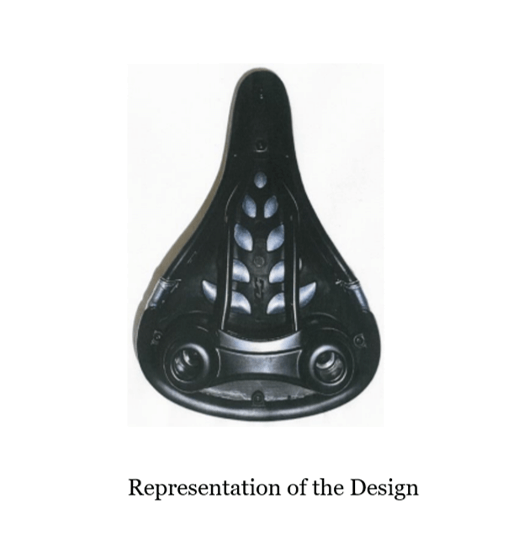
Protection of parts of complex products – lost in translation?
The requirements for design protection in the EU for parts of a complex product is not easy to decipher. The CJEU very recently had to consider these requirements in relation to a design for the underside of a bike saddle.
Introduction
To be eligible for protection in the EU, designs have to be new and have individual character (Article 3, Design Directive). Protection is available not only for entire products, but also for component parts which can be replaced to allow disassembly and reassembly of a complex product.
Such components are, however, subject to the extra requirement that, once incorporated into the complex product, they must remain visible during normal use and must in itself meet the requirements of novelty and individual character (Article 3(3) and (4)). Under the Directive, “normal use is to be seen as use by the end user, excluding maintenance, service or repair work”.
The precise interpretation of these requirements is a regular basis for discussion, and recently made its way to the CJEU in Monz v Büchel.[1]

Factual background
The company Monz had registered the following design at the German Patent and Trademark Office relating to the underside of a saddle for bicycles or motorcycles (the “Design”).
Büchel filed an application for a declaration of invalidity of the Design. It argued that the Design is for a component part of a complex product (namely the bicycle or motorcycle), but is not visible during normal use.
It appears to have been common ground between the parties that the Design is not visible when riding the bike or motorcycle.
Büchel’s invalidity action triggered mixed decisions:
- In first instance, the Design was found to be visible during normal use and, therefore, upheld. In essence, it was held that normal use would also include (dis)assembly of the bike, if done for purposes other than maintenance, servicing and repair. Apparently certain (motor)cyclists would remove their saddle as an anti-theft measure.
- The appeal court, however, invalidated the Design. In essence, it found that, once mounted, the underside of the saddle is invisible during normal use, which the court interpreted narrowly as only riding (including hopping on and off) the bike.
Monz then appealed this decision to the German Supreme Court, who referred the matter to the CJEU.
Findings of the CJEU
“visible”
First, the Court considered that Article 3(3) and Recital 12 do not allow assessment of the visibility of a component part in abstract terms, without any connection to a particular situation of use.
Whether or not a component part is visible once it has been incorporated into a complex product is a question that must be assessed in light of a situation of normal use of that complex product. Such assessment must not be made only from the perspective of the end-user of the complex product. The external observer’s view must also be considered.
Importantly, according to the Court, it is not necessary that the component part, incorporated into a complex product, must remain fully visible the whole time the complex product is used.
“normal use”
The Court went on to explain what it considers the proper interpretation of “normal use” in the sense of Article 3. Contrary to Büchel’s position, it found that normal use is not limited to the use intended by the manufacturer of the component part or the complex product.
Büchel’s argument may have been largely triggered by a translation issue. In the German language version, Article 3 requires that the component part remains visible during its “bestimmungsgemäßer Verwendung” (a term that indeed translates best as “intended use” or “goal-bound use”). But, other language versions of the Directive seem to justify a broader interpretation (as in, “customary use”), which the Court also confirmed.
Consequently, “normal use” encompasses all acts relating to the principal use of the complex product, as well as other acts which may reasonably be carried out during such use and which are customary from the perspective of the end-user. The Court also granted a broad interpretation to such “customary acts”. It considered that they also include acts performed before and after the product has fulfilled its principal function (such as its storage and transportation), as long as it does not relate to maintenance, servicing and repair work.
Outlook
The case is now back with the German courts for final resolution of the dispute.
Looking at the findings of the Court, it is doubtful whether there is any more room for a position that the design is eligible for protection because the user sometimes removes the saddle from the bike. Such argument does not address whether the component part is visible when incorporated in the complex product, which is what is required under Article 3 and also confirmed by the Court (in paragraph 41).
But where one door closes, another one may open. The Court’s findings that:
- the component design must not always be visible; and
- normal use even encompasses acts such as storage and transportation, rather than being limited to performance of the principal function of the product, seem to create a lot of leeway to argue that the saddle design is valid. It seems possible to credibly cite scenarios where the underside of the saddle would be visible at some point during storage (e.g., storing the bike by way of a hook attached to the ceiling) or transportation (on top of a car or behind a wagon).
More generally, the Court’s broad interpretation of “normal use” in the sense of Article 3 is good news for those desirous of protecting the design of component parts. However, for businesses relying on the exclusion of non-visible component parts, this judgment may urge for a reassessment of their freedom to operate. Parts that are generally hidden may still be eligible for protection. If so, depending on the circumstances, potential defendants may seek recourse in other design restrictions, such as the exclusion of solely technically determined design, or, under the so-called “repair clause” (Articles 7 and 14, respectively).
[1] CJEU 16 February 2023, Monz Handelsgesellschaft International mbH & Co. KG v Büchel GmbH & Co. Fahrzeugtechnik KG, C‑472/21, EU:C:2023:105.








